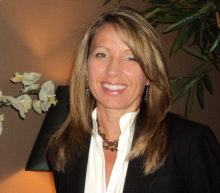Pool Power: The Wave Of The Future
(Inside Science TV) -- Whether it's the backstroke, the butterfly or freestyle, with every stroke swimmers create energy that could be used as a source of electrical power.
Yinger “Eagle” Jin, a sophomore at Wake Forest University in Winston-Salem, North Carolina, developed a device that uses the energy generated from swimmers’ waves to create enough electricity to power a light bulb for an entire day.
The waves from the swimmers push air into a tube which turns the blades of a turbine. The turbine then spins a magnet inside coils of wire within the tube to create electricity.
“The air pushes the turbine to generate the energy,” Jin explained.
The pool that Jin used to test the device is open to swimmers for ten hours each day, and about ten people swim in it each hour. Jin and Sarah Mason, a mathematician at Wake Forest, calculated that if each person swam the butterfly stroke, they would generate enough waves to power one 100-watt light bulb for one day.
“You’re basically using the waves to create wind,” said Mason.
Jin soon hopes to test the technique on a much larger scale – the ocean.
“The power of the ocean is pretty under-used,” said Jin.
Wave energy is more consistent than other similar sources like wind or solar energy. And because oceans cover more than 70 percent of the Earth's surface, it is an abundant and sustainable option.
“It could be a very powerful source of energy for this country,” said Mason.
The next step in this project is to follow-up on research conducted at North Carolina’s coast. Mason said they will attempt to calculate how much power could be produced through wave energy off of this coastline.

